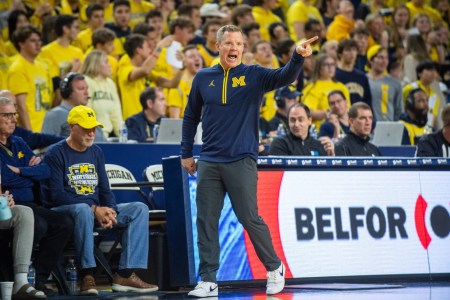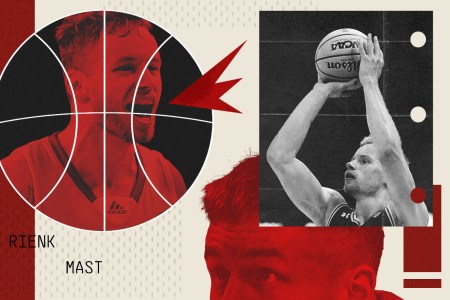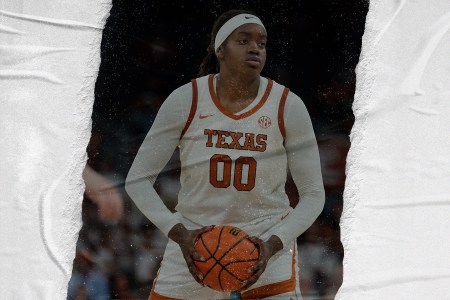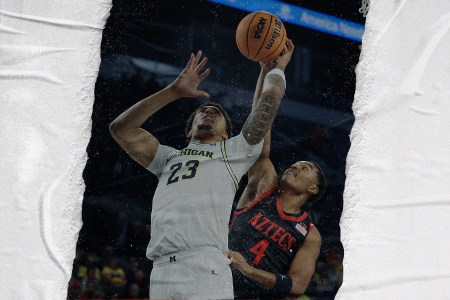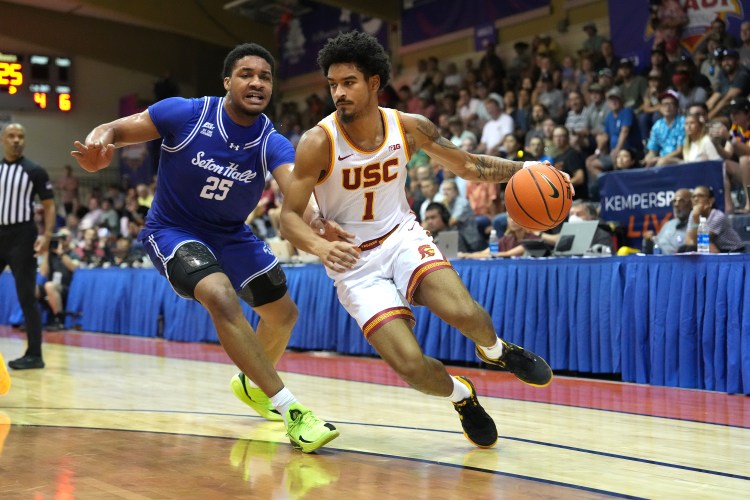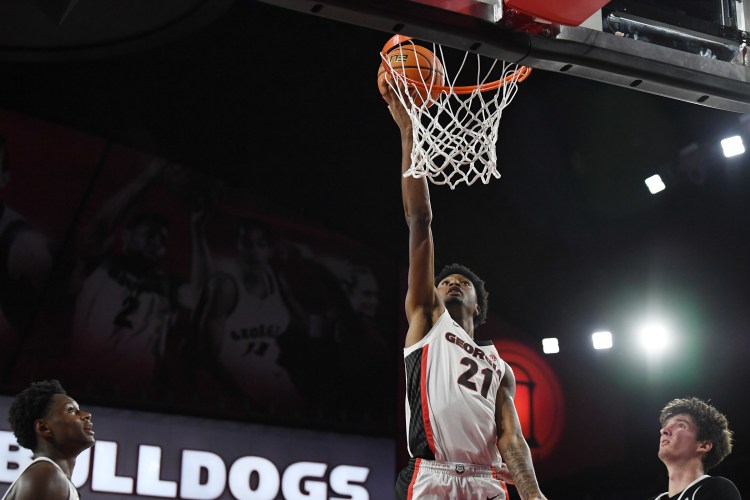Here’s the bottom line on Illinois. The Illini’s Big Ten and national title hopes depend heavily on how good two 18-year-olds — point guard Kasparas Jakucionis and wing Will Riley — can become. How unusual is this in today’s get-old-and-stay-old era? Duke, led by everybody’s favorite All-American freshman Cooper Flagg, is the only other team inside KenPom’s top 25 that has two freshmen leading the way in usage rate.
Jakucionis already has proven to be the real deal. Over the last five games, the 6-foot-6 Lithuanian has averaged 22 points on 47.1 percent shooting (50 percent from three) to go along with 6.2 rebounds, 4.6 assists, 4.4 turnovers and 1.2 steals. No wonder he’s moved into the top 10 of most every mock NBA draft.
“He’s been every bit as good as we hoped,” Brad Underwood said after Saturday’s 66-64 home loss to Tennessee.
As you can tell by the turnovers, Jakucionis isn’t perfect. There are at least two possessions each game where he sees a path for a pass that the intended receiver does not. While he’s built solidly, he’s not a fully `grown 22-year-old like many of his defenders.
In the Tennessee game, Vols coach Rick Barnes sicced his best defender, senior Jahmai Mashack, on Jakucionis. On one occasion in the first half, when Jakucionis picked up his dribble 25 feet from the hoop, Mashack ripped the ball right out of his hands while discarding Jakucionis to the floor.
Even so, Jakucionis produced two four-point plays in a three-minute stretch of the second half to give Illinois a six-point lead. Against Arkansas on Thanksgiving, Jakucionis scored 14 straight second-half points for the Illini down the stretch. In Tuesday’s six-point conference win over Wisconsin, he played the entire second half and led all scorers with 14 points.
“As high-usage as he is, as much as he’s got the ball in his hands, I would be lying if I didn’t say I was surprised by him defensively,” Underwood said. “Offensively, I knew there was a maturity. I knew (he had an) ability to read. I’ve been really impressed with how much he studies the game and how hard he works at it. But I think that’s one of the advantages of some European kids. The competition doesn’t bother him. I mean, he’s played high-level guys his whole life and been around a lot of great players.”
Riley, on the other hand, gave up his last year of high school to join Illinois. The slender 6-foot-8 Canadian exploded for 31 points (in just 25 minutes) in his college debut against Eastern Illinois. He struggled in the first half against Alabama a month ago but rallied to finish with 18 points, 9 rebounds and 4 assists.
But Riley’s last four games — all against power conference foes — have been more freshman-like. He averaged 8.0 points, 2.5 rebounds and one assist in 23.5 minutes off the bench. More importantly, he has missed 16 of his 17 three-point attempts and shot 8 of 17 inside the arc. He received just 12 second-half minutes between the Wisconsin and Tennessee games.
“It’s what happens when you get off to a really hot start and you start not playing 30-point-win buy games,” Underwood said after the Tennessee loss. “I wish we didn’t have to play any of those buy games and they could all be real games like this one. That’s how you get better. You don’t build false realities.
“He’s at the top of the scouting report. He’s a great, great player. And I just want him to keep shooting open shots because he’s an elite shooter.”
He’s elite, but he’s young. So is Jakucionis. The faster they grow up, the better Illinois’ season will be.
Inside the Big Ten: Dusty May’s Debut, Oregon’s Home-Grown Big Man, Lots More
The Big Ten’s 20-game conference schedule opens Tuesday
ESSEGIAN LOVING THE HUSKER LIFE
The Big Ten doesn’t offer an official Comeback Player of the Year award, but that won’t stop Hoops HQ from suggesting that Nebraska’s Connor Essegian would deserve strong consideration alongside Michigan State point guard Jeremy Fears Jr. and Oregon big man Nate Bittle.
What’s Essegian’s case? Well, in just nine games for Nebraska, the junior shooting guard already owns more points (117) than he scored for Wisconsin all last season (104).
Essegian was a premier three-point shooter for the Badgers as a freshman. He drilled 69 treys and finished third on the team with 11.7 points per game. But five minutes into his sophomore season, he suffered a back injury. Though it wasn’t severe enough to force him to miss any games, it did impact him. As a result, he went from being Wisconsin’s sixth man to a bit player. He scored in double figures just twice.
Essegian’s struggles sent him to the transfer portal, where he was delighted to discover coaches remembered he can shoot. When Essegian visited Nebraska, head coach Fred Hoiberg treated him to a sweet film festival. “He showed me a lot of clips of what I did freshman year,” Essegian said. “And also showed a lot of clips of what they had Keisei (Tominaga) and CJ (Wilcher) doing last year. They wanted me to be in that similar role.”
Turns out Essegian can do a pretty decent impression of the sweet-shooting lefty from Japan who earned second-team all-Big Ten honors last season. Tominaga averaged 15.1 points in 26.1 minutes while sinking 37.6 percent from three. Essegian is averaging 13.0 points in 21.9 minutes while making 44.0 percent from three.
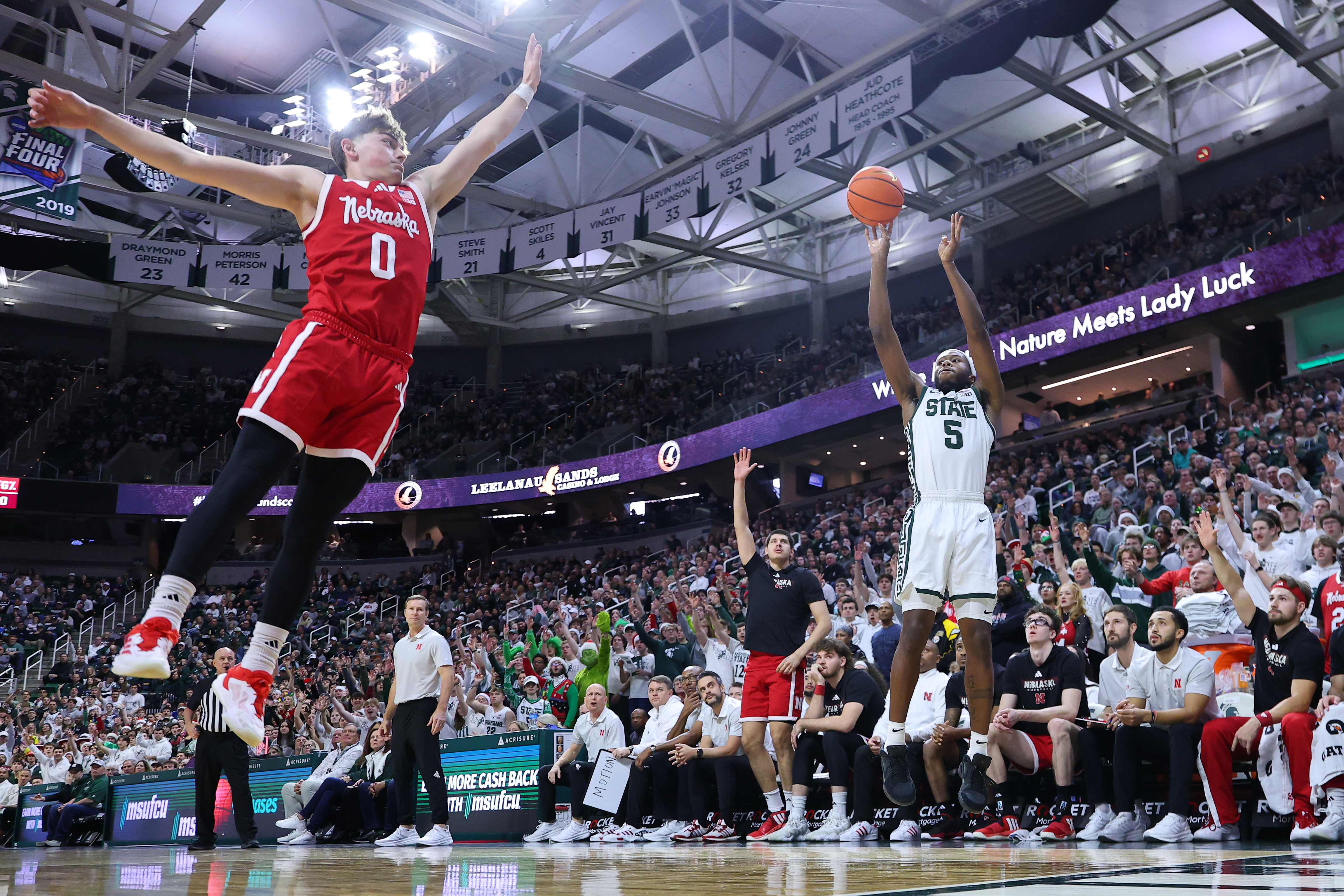
“There are some similar actions for sure, but we’re two different types of players,” Essegian said. “But in general, having actions like that for shooters — their package is deep. Coach Hoiberg knows so much and so do all the other coaches, but him playing in the NBA, coaching in the NBA and being a GM in the NBA, he’s been around basketball at the highest level for a long time, so his package is deep.”
Hoiberg also invited Essegian’s younger brother, Sam, to join the program as a manager shortly before school began. Sam’s original plan was to play Div. III ball, but he underwent surgery in the summer to repair a torn ACL. Hoiberg’s offer was perfect to satisfy Sam’s desire to be part of a program and hang with his brother. Connor was happy to have Sam move into his apartment. “He does have a room, but it doesn’t have a window to it, so it’s kind of like a dungeon,” Connor says. “But he’s doing all right.”
Connor’s doing all right, too. If he keeps shooting like this, Nebraska will be, too.
AROUND THE RIM:
- With so many of the Big Ten teams so evenly matched, perhaps it’s no surprise that home teams won 15 of the 18 conference games over the last two weeks.
The only three road wins: Michigan led by no more than three to hand Wisconsin its first loss Dec. 3; Michigan State, which suddenly has 10 above-average players in its rotation, hammered shorthanded Minnesota by 18 points on Dec. 4; and UCLA’s Dylan Andrews banked a three-pointer with :00.4 left to give the Bruins a 73-71 win Dec. 8 at Oregon.
- UCLA’s win over Arizona on Saturday wasn’t technically a road game – the game was played in Phoenix, not Tucson – but it was special all the same. The Bruins trailed by 13 points midway through the second half and ended up winning, 57-54.
The Bruins have developed into the Big Ten’s highest-ranking KenPom team thanks to a 10-man rotation that allows head coach Mick Cronin to play 94 feet of defense. Accordingly, UCLA ranks first nationally in forcing turnovers (on 28 percent of possessions) and fourth in Adjusted Tempo defense (93 points per 100 possessions).
Cronin, meanwhile, ranks high on the head coach dry comedy scale. Two weeks ago, he described his team’s iffy three-point shooting to UCLA beat writers like this: “Your perimeter shooting comes and goes like your high school girlfriend does from (ages) 18 to 40 — in and out of your life, OK?”
Immediately after the Oregon win, Andy Katz of Big Ten Network opened his courtside interview with some enthusiasm for the conference game in both teams’ history. Cronin pointed at the BTN flag on Katz’ mic and noted, “I’m still getting used to you saying Big Ten.” He also noted he was playing golf with UCLA and USC announced the shift from the Pac-12 to the Big Ten.
- Maryland is among the 12 Big Ten teams that split their first two conference games, but the Terps made a huge statement by building a 50-17 halftime lead over Ohio State and then nearly ending Purdue’s 23-game home winning streak.
Freshman forward Derik Queen has realized he can do whatever he wants offensively. With the Purdue game in the balance, Queen stepped out and hit his first career three-pointer to tie the game. Then, on the next possession, he hit his second.
“He’s an old-school type (of) player,” Maryland coach Kevin Willard said. “That’s probably the best compliment I can give somebody. He plays like a 50-year-old man. He sees the game that way. He’s so smart.”
- Similar to Illinois, Rutgers’ fortunes also depend heavily on freshmen Dylan Harper and Ace Bailey. In the nine games since Bailey shed his preseason injury and joined the lineup, the duo has combined to take 52 percent of Rutgers’ field-goal attempts and score 52 percent of the team’s points. Harper had yet another signature moment when pulled up to sink a 30-foot three-pointer at the buzzer to lift the Scarlet Knights to a 66-63 victory over in-state rival Seton Hall on Saturday.
“I’m confident in these guys,” Rutgers coach Steve Pikiell said the win over Seton Hall. “They’re figuring it out. They’re growing up. And now figuring out how to win tough games.”
- Remember when Michigan State used to be absolute beasts on the boards? Well, the Spartans are back. Through Saturday’s games, they lead the Big Ten and rank sixth nationally with a rebounding margin of +11.4 per game. Junior power forward Jaxon Kohler leads the way with 8.3 per game.
It’s a dramatic improvement from recent seasons. Last year, the Spartans’ margin was just +1.1 per game. The year before that, +3.0. The year before that, +4.2. The year before that, +3.2.
Michigan State hasn’t owned the boards like this since the 2017-18 season when Miles Bridges, Jaren Jackson Jr., Nick Ward and Xavier Tillman played for a 30-5 team that won the Big Ten before getting shocked in the NCAA Tournament’s second round.
By the way, the Spartans’ 2000 NCAA championship team finished at +11.7 in rebounding margin.
- Lastly, because it’s the holiday season, everyone deserves to spend four minutes enjoying Purdue senior forward Caleb Furst’s greatest hits as “Caleb the Elf”:
Upcoming Games to Watch
Dec. 18: Michigan vs. Oklahoma (9 p.m. ET; ESPN2): The Sooners are among the nation’s last few unbeatens, but they’ve only played one team (Arizona) approaching Michigan’s ability. The Sooners are led by freshman guard Jeremiah Fears, who was committed to Illinois in the Class of 2025 but decided to go to college a year early and switched schools to make it happen. Meanwhile, here are Danny Wolf’s averages over the last four games, all of which came against Top 60 teams: 16.8 ppg, 10.5 rpg, 4.5 apg, 1.8 bpg, 1.3 spg while shooting .628 from the field.
Dec 18: Washington State at Washington (11 pm. ET; FS1): Though the Pac-12 split up, the Huskies and Cougars made sure to find a way to play for the 108th consecutive season. Washington owns the all-time lead 187-111, but Washington State took seven of 10 during the Kyle Smith era. This time around looks like a pick ’em, but maybe having home court makes the difference. Our prediction: Huskies soph Tyler Harris makes the game-winning defensive stop.
Dec. 21: The final Saturday before Christmas brings us big games from coast to coast. In the greater New York City area alone, we get Rutgers-Princeton, Syracuse-Maryland, North Carolina-UCLA and Kentucky-Ohio State (we’d say it’s the Aaron Bradshaw Bowl, but none of his UK teammates or coaches are still in Lexington). In Birmingham, Purdue and Auburn — two teams that haven’t ducked anybody this year — meet for a neutral game. Way out west, Oregon starting forward Brandon Angel returns to Stanford for a clash between former Pac-12 foes. And if you need a game to watch that’s actually happening in the Midwest, DePaul and Northwestern battle for bragging rights in the Windy City.
Dec. 22: Illinois vs. Missouri (1 p.m. ET, ESPN): The Braggin’ Rights game might be the most honest neutral game in the country. Each year, the Illini and Tigers split the tickets 50-50 at the Enterprise Center in St. Louis, which makes for a raucous atmosphere, especially when the fans have a night game to, uh, prepare for the fun. Brad Underwood owns a 3-4 record despite being the favorite five times. The Illini are favored again against a rejuvenated Mizzou team that hasn’t played away from its home court since Nov. 4. The outcome will depend on how well guards Kasparas Jakucionis and Kylan Boswell handle Mizzou’s pressure.
Dec. 28: Gonzaga vs. UCLA (8 p.m. ET; FOX): This is the first college game being played at the fabulous $2 billion Intuit Dome, which is usually the home of the Los Angeles Clippers. The West Coast Hoops Showdown brings the Bruins and the Zags together for the fifth year in a row. UCLA is still looking for its first W. It’s always fun to watch a fantastic defense (UCLA) try to slow down a high-powered offense (Gonzaga). More specifically, the Zags rarely turn over the ball, but the Bruins have multiple ball hawks in Kobe Johnson, Eric Dailey Jr. and Skyy Clark.


